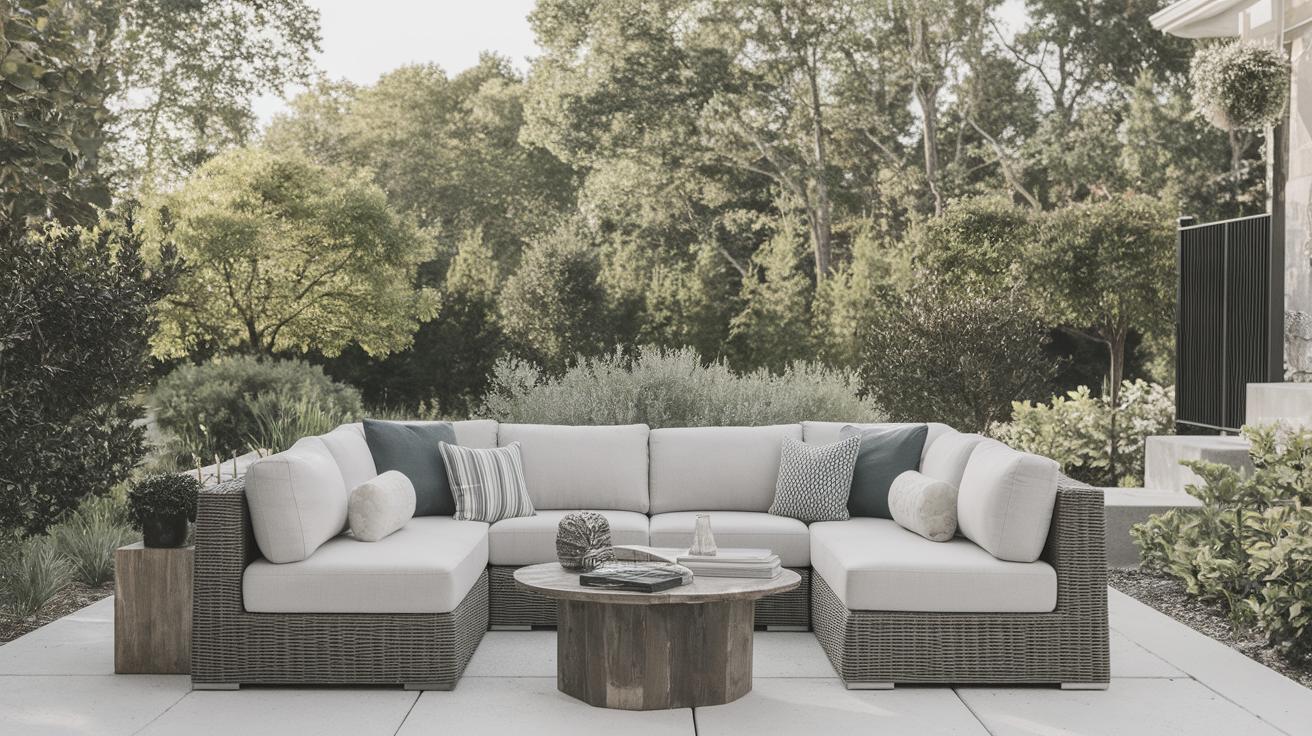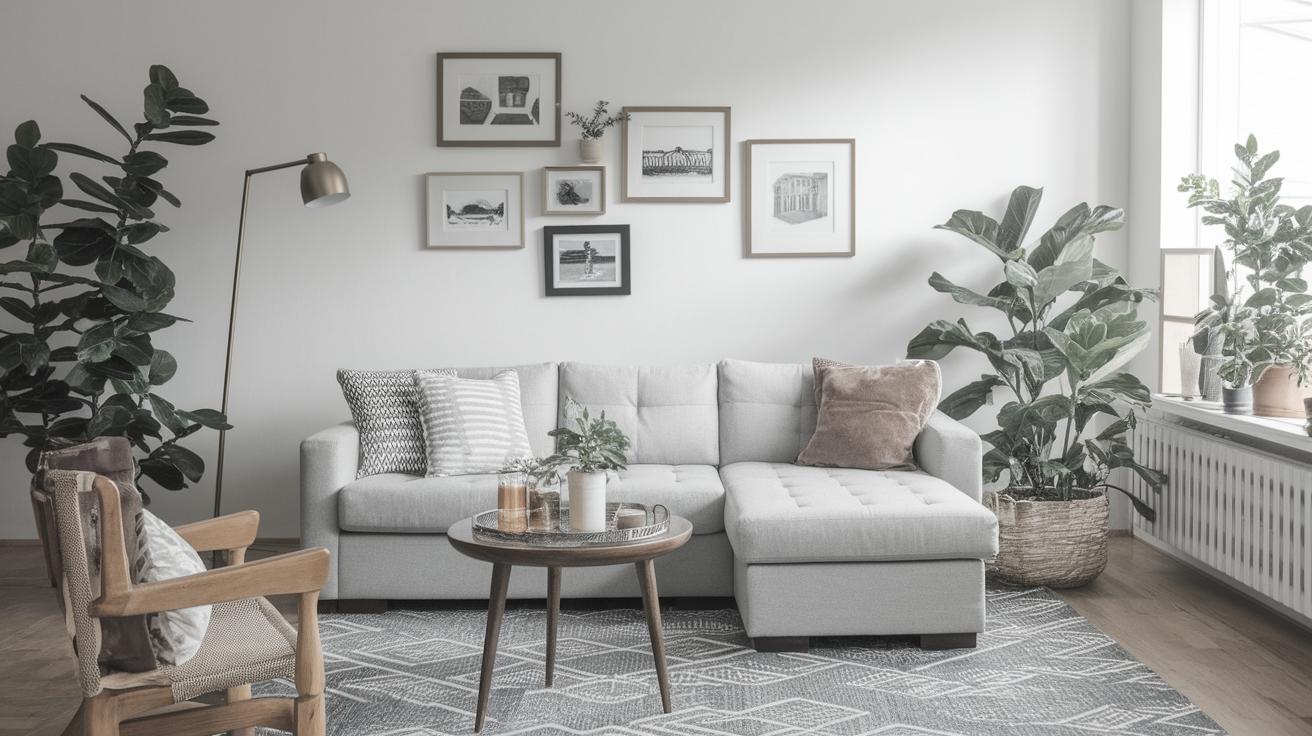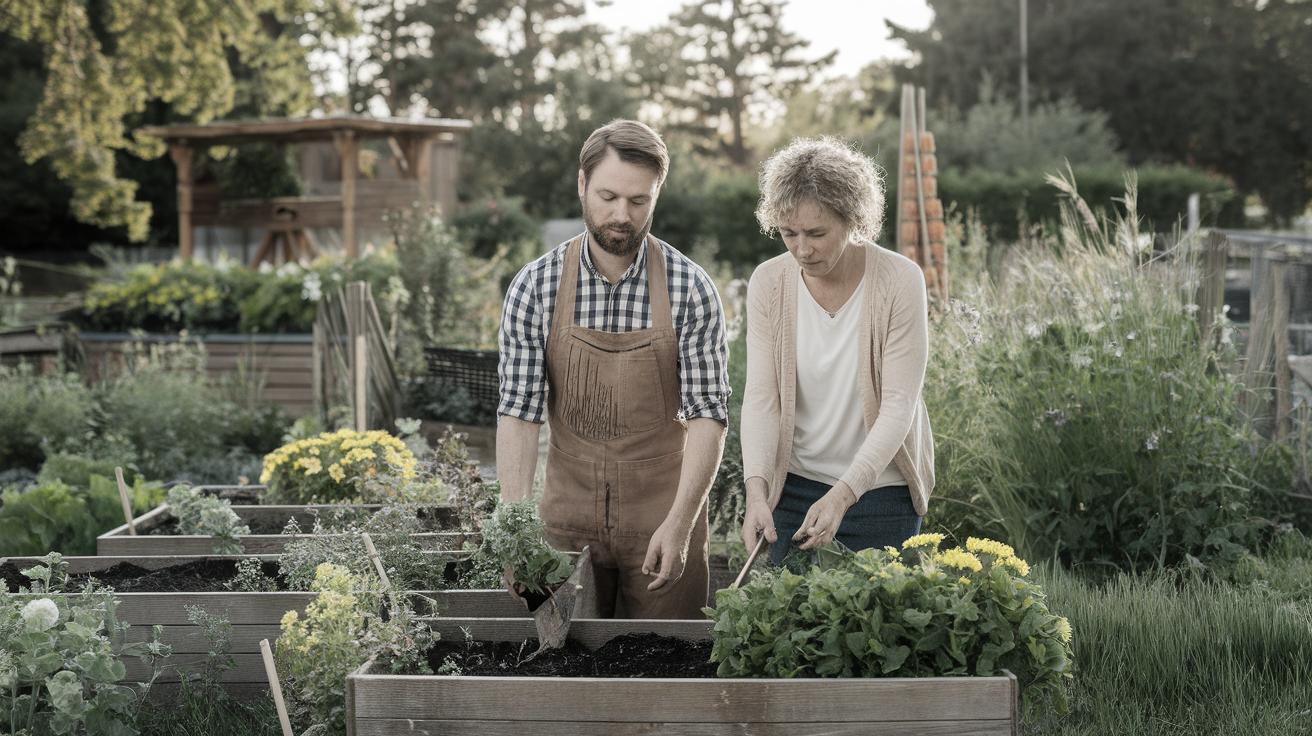How to Create a Relaxing Outdoor Living Space
Transforming your backyard or patio into a relaxing outdoor living space can be a rewarding project. In this guide, we’ll explore various ways to create an engaging and serene environment right outside your door. From establishing traffic patterns to incorporating table-top texture and color, we’ll cover key strategies that will help you fashion an oasis ideal for relaxation and entertaining. Whether you have a spacious yard or a petite balcony, these 14 practical and creative ideas will inspire you to enhance your outdoor area in ways that suit your unique style and needs. Get ready to be inspired as we journey through each element that contributes to crafting the perfect outdoor escape.
Establish Traffic Patterns
Setting a clear path for movement is crucial in creating an inviting outdoor living space. Define pathways with stepping stones or use gravel and wood chips to lead guests through various areas of your yard. By establishing clear lines of movement, you can prevent plant damage, distribute foot traffic evenly, and make the space more intuitive to navigate.
Consider the natural flow of movement from your home’s exit to key areas like seating spots or garden views. Deliberately designed pathways can also guide attention toward particular elements of your design, such as a beautiful garden bed or a water feature, creating a sense of order and harmony.
Add a Fire Source
Incorporating a fire source into your outdoor space adds warmth and ambiance, making the area usable even during cooler seasons. Options include a traditional fire pit, a sleek fire table, or even a compact tabletop burner. The flickering flames not only provide heat but also create a cozy, inviting atmosphere perfect for gatherings or quiet evenings under the stars.
Choose a fire source that complements the style and size of your space. Ensure safety by placing it on a stable surface and away from flammable materials. Fire sources serve as excellent focal points around which seating can be arranged, making them a multifunctional and central feature of your outdoor retreat.
Include a Variety of Seating Options
An outdoor living area should support various activities, which is why a selection of seating options is necessary. Mix and match seating to accommodate different moods and gatherings. Think about combining recliners, lounge chairs, benches, and dining chairs sprinkled with cushions or throws for added comfort.
Provide ample seating for both relaxation and social interactions. Consider versatile seating solutions like modular sections that can be rearranged for different sized groups, or stackable chairs that are easily stored when not in use. Variety in seating ensures flexibility and comfort, making the space adaptable to any occasion.
Create an Outdoor Space Focal Point
A focal point is essential to draw interest and anchor your design. It could be a stunning sculpture, a water feature, or a fire element—anything that captures attention and serves as a visual anchor within the space. Tailor the focal point to reflect your personality while complementing the existing design elements in your yard.
Position your focal point prominently in the design layout to naturally lure the eye. Use elements like symmetry, colors, or textures surrounding this point to enhance its appeal and ensure it seamlessly integrates with the overall theme of your outdoor space.
Boost Visual Appeal
Enhancing the aesthetics of your outdoor living area involves layering textures, colors, and materials. Introduce decorative elements like throw pillows, outdoor rugs, and vibrant plant containers to add pops of color. Use mix-and-match materials such as wood, stone, and metal to provide depth and interest.
Lighting is another critical component. String lights, lanterns, and solar-powered fixtures can add warmth and dimension. Thoughtfully curated visuals enrich the overall setting, creating a cohesive and delightful outdoor environment.
Establish a Sense of Discovery
Incorporate hidden gems and surprises in your landscape design to encourage exploration and discovery. These can be secluded bench nooks, unexpected art pieces, or a winding path leading to a secret garden corner. Such elements invite curiosity and offer retreat spots for intimate conversations or peaceful contemplation.
Design your landscape with hints that entice visitors to wander further and experience your entire space. This can be accomplished with pathways that twist away from the main area or sightlines obscured by lush plantings, providing a sense of privacy and intrigue.
Rely on Containers for Color
Containers offer an ideal way to add bursts of color that are flexible and easily adjustable. Select pots in varying sizes, shapes, and materials to complement your design aesthetic. Fill them with flowers, herbs, or ornamental grasses to introduce vibrancy and texture.
The beauty of container gardening lies in its versatility. Containers can be relocated to accommodate seasonal changes or spontaneous garden redesigns. This adaptability allows you to maintain freshness and interest within your outdoor living space all year round.
Fashion a Go-to Spot for Tools
Maintaining the beauty of an outdoor living space requires easy access to gardening tools. Designate a discreet yet convenient location for storing hand tools, watering cans, and other essentials. A modest garden shed, bench with built-in storage, or attractive wall hooks can keep your tools organized and within reach.
An organized tool space ensures that necessary tools are always available, fostering a sense of readiness and inviting spontaneous gardening or plant care. Moreover, portable storage solutions can blend seamlessly with your overall design, adding functionality without compromising aesthetics.
Make Furnishings Work Twice as Hard
Choose furniture that offers multifunctionality to maximize space efficiency. Benches with storage, tables with integrated coolers, or ottomans that double as seating and storage can enhance functionality and appeal. Such furnishings allow for space optimization and better organization.
Investing in dual-purpose furnishings not only provides practical benefits but can also contribute to a clean and uncluttered space, creating a more relaxing environment. Look for items that satisfy aesthetic preferences without sacrificing utility.
Zone Your Space
Segmentation of your outdoor area into zones enables varied experiences. Define areas for dining, lounging, gardening, or playing by using rugs, planter borders, or furniture arrangements to create visual and functional distinctions. Each zone serves specific activities, ensuring a dynamic and user-friendly space.
Carefully planned zones offer both privacy and cohesiveness. They allow for multiple activities to occur simultaneously without interference, making your outdoor living area more adaptable and welcoming for different needs and occasions.
Strategically Shield the View
Install elements like trellises, hedges, or pergolas to screen views, offer privacy, or create cozy corners. Obscuring unsightly elements with stylish screens or strategically planted shrubs can transform an exposed space into a secluded retreat.
The strategic use of natural and constructed barriers not only hides less desirable views but can also serve as integral design elements that enhance the attractiveness and privacy of your outdoor environment.
Try Affordable Updates
Small, budget-friendly updates can have a significant impact on your outdoor space. Consider repainting furniture, switching out cushions or decor accessories, or introducing new plant varieties. Even minor enhancements can freshen the look and feel, offering seasonal variety and renewed interest.
Use paint, fabrics, or decor to reflect changing seasons or personal inspirations. These small investments keep your space engaging and ever-evolving without requiring a substantial financial commitment.
Incorporate Tabletop Texture and Color
Boost the visual appeal of dining or side tables with tablecloths, placemats, or centerpieces that provide texture and visual interest. Natural materials such as woven runners or ceramic vases add a tactile dimension that enhances the sensory experience of your outdoor area.
Choose vibrant colors that resonate with your overall design scheme. Tabletop enhancements create focal points and can be effortlessly changed to reflect occasions or aesthetic updates, adding dynamism to your outdoor setting.
Connect to the Indoors
Seek to create a seamless connection between your indoor and outdoor living areas. Use colors, materials, and design themes that flow between the two spaces, offering a cohesive transition. Sliding glass doors or continuous flooring create visual linkage and accessibility.
Blurring the lines between indoor and outdoor spaces not only expands your living area but also promotes a more harmonious environment. This connectivity allows for easy movement and interaction, enhancing the overall usability and enjoyment of your home.
Add Accents to Walls
Outdoor walls offer prime space for accents that contribute to ambience and style. Hang art pieces, install vertical planters, or use paint to create murals. Such elements add personality and can turn otherwise blank canvases into intriguing visuals.
Consider seasonal changes when decorating outdoor walls. Rotating artwork or altering plantings can keep the space lively and captivating. Wall accents are an excellent means of personal expression and can significantly influence the atmosphere of your outdoor living area.
More Ways to Create an Outdoor Room You’ll Love
The beauty of designing an outdoor space lies in the personal touch. Incorporate your unique style through decor, furniture selection, and landscaping choices. Remember to prioritize comfort and functionality to ensure the setting invites relaxation and enjoyment.
Regularly refresh and update your outdoor space to keep it vibrant and accommodating. Seek inspiration from nature, interior trends, or personal passions to fuel your creativity. Ultimately, a well-curated outdoor room should be a reflection of who you are and a sanctuary that brings joy, peace, and connection.
Lessons Learned
| Aspect | Summary |
|---|---|
| Traffic Patterns | Create clear paths for movement to improve navigation and aesthetics. |
| Fire Source | Add warmth and ambiance with a suitable fire element. |
| Seating Options | Incorporate diverse seating for flexibility and comfort. |
| Space Focal Point | Use a focal point to anchor and define your outdoor design. |
| Visual Appeal | Enhance aesthetics with colors, textures, and lighting. |
| Sense of Discovery | Create intrigue with hidden spots and winding paths. |
| Containers for Color | Employ containers for adaptable and vibrant planting. |
| Go-to Spot for Tools | Organize tools for convenience and readiness. |
| Dual-Purpose Furnishings | Maximize space usage with multifunctional furniture. |
| Space Zoning | Define functional zones for varied activities. |
| Shield the View | Use barriers for privacy and improved ambience. |
| Affordable Updates | Refresh the area with budget-friendly enhancements. |
| Tabletop Texture | Use texture and color to enhance dining spaces. |
| Connect Indoors | Create seamless transitions between inside and outside. |
| Wall Accents | Decorate walls to add interest and style. |


